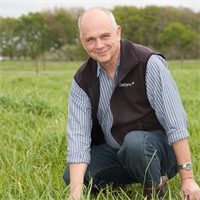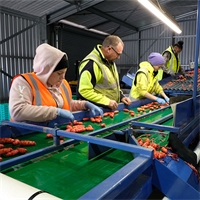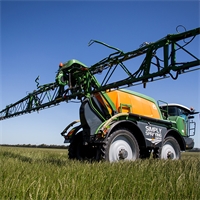Words by Craig Rodgers, Ruralco Seed Sales Manager
It has been several years since the autumn period has produced a consistent spell of warmer weather. With only a couple of light frosts the soil temperature has remained high and consistent growth rates across all crops and pasture. Feed surpluses have been good with little demand for supplementary feed over the past few weeks and now farmers are looking to manage and transition on to winter crops.
Cereals
Autumn sown crops were in earlier due to the early harvest, this has resulted in good establishment and growth. It is predicted that autumn sown cereals pricing will be down on the previous year. Grain pricing seems to be holding on the open market and recently released milling contracts are priced similar to last year with a slight rise in softer wheats. All wheat varieties seem to be readily available and at time of writing we were awaiting the 2019 FAR trial results.
There was a large variation in yields across all cereals this past harvest, a mixed bag of weather through the late spring with cooler than normal temperatures left a lot of cereals struggling to fill and reach their full potential. It is estimated that there is an increase of unsold grain on the market and could be as high as 20% more on the previous time last year. While yields were back, the increase in sowings last year and minimal movement of free product post-harvest is signalling that we may have a large surplus in the early spring. There has been some enquiry for wheat through the past couple of months but limited demand for feed barley. This harvest has resulted in good wheat quality and some feed barley has higher than normal screenings, which may see a two-tier pricing structure in place this year.
Grain prices have remained stagnant over the past month and there has been limited demand from dairy farmers and other end users. It is likely that demand will increase for the spring period, but most movement throughout the past few months has been for contracted grain.
Pasture
Pasture renewal has been steady and often weather dependant as we head into late autumn. We are still seeing some late sowings mainly due to early winter grazed crops coming off. Hopefully if we get an early winter, we will get an early spring and once the soil temperatures start heating up, it is an appropriate time to plant but this can depend on soil conditions. Some heavier soil types are too boggy to get implements across in early spring and you are better waiting to the days get longer and warmer.
We have seen steady rainfall through autumn with most being quite heavy at times making paddock conditions very wet for short periods of time, often these paddocks being grazed immediately follow the rain can cause some damage to pasture especially around gateways. Patching these up during winter may not get the desired result and waiting till early spring will be a better option. There are some good options available to help tidy up these areas but ensure you consider what is planned for that paddock in the future. If it is likely to be re-grassed or cropped then a short-term grass or renovation style mix would be suitable, but if it is a well performing or newish pasture then look to spend a little more to ensure it is back performing to its potential.
If you are having stock on pastures over the winter period, ensure you choose paddocks based on which can handle the conditions ensuring you don’t damage too many new or good pastures.
Selection of cultivars is also important and while there can be a variation in pricing the Forage Value Index is a great guide to selecting the grass that will produce best when you need it to. Any grass will look good in the first couple of years, but persistence is where you get the greatest value.
Winter Crops
The measuring and grazing of fodder beet is underway and as usual the general variety discussion with farmers is revolving around yield, dry matter content and stock suitability. Early weights are showing a decrease across most varieties compared with last year, however these are improving following the recent favourable weather. The transition period remains the most important process of the fodder beet crop and an independent yield assessment is only a guide as crops can vary in size across a paddock. The most accurate estimation is often measured by what the stock are eating or sometimes what they are leaving behind.
Once again, we have seen an increase in kale area this season and crops at this stage are looking fairly good. Most kale crops went in after the cooler spring and have responded well through the late summer and autumn. Overall there seems to be satisfactory amounts of winter feed available and these will only increase as we get some frosts which will bring the dry matter percentage up. If the milder weather continues and ground conditions remain favourable the conversion of feed should be high through the early part of winter.
There seems to be plenty of supplements available of straw, silage and hay.
Forage crops have little effective fibre and supplementation with a high fibre feed like hay, straw and silage is recommended to aid. The transition to winter crops is important and you will need to calculate daily feed allocation carefully to prevent metabolic disorders and to maximise body condition gains.
Related

Summer is just around the corner and with that comes the risk of facial eczema (FE).
Read More

After surviving a brutal attack, Auckland cop DS Honey Chalmers has returned to her hometown, Waitut...
Read More

There is something highly counter-intuitive for experienced vegetable growers to want to grow a weed...
Read More

At 54 years old, Ruralco On-Farm Sales Manager, Lester Chambers is pretty open about his experience ...
Read More

What started out as a fleeting comment has grown into fledgling business for a Selwyn couple determi...
Read More

Winter is fast approaching and for the next 3 months our focus will be sown arable crops, barley gra...
Read More